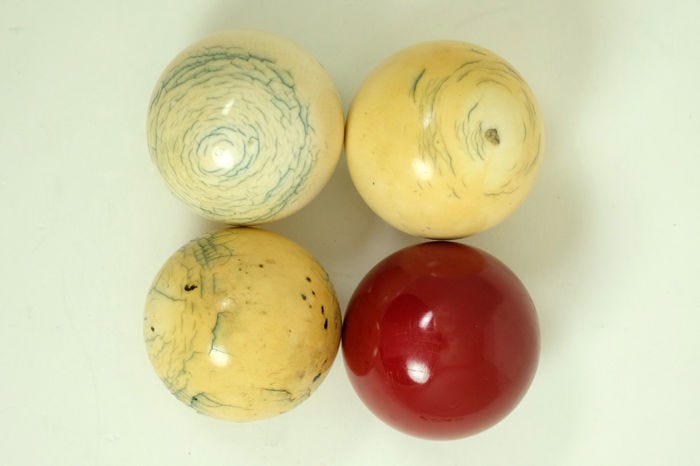#13 Empathy, billiard balls and experts
It’s Design Lobster #13 – distract yourself from the unlucky associations with some tales of heroic empathy …and well, balls. 🎱
Question: How might we empathise with the people who use our designs?
Many of my readers will be familiar with ethnographic research techniques like contextual interviews and diary studies. But how far would you be prepared to go to truly understand your users’ lives? Between 1979 and 1982, the 26 year-old designer Patrica (Pattie) Moore painstakingly disguised herself as an elderly woman using bandages and splints to restrict her limbs and cloudy glasses and earplugs to simulate poor sight and hearing. During one of these research experiments she was mugged and beaten by a group of youths, receiving injuries that she later discovered had made her infertile.
At the time she was working in Raymond Loewy’s New York design firm as the only woman and was frustrated with the lack of attention given to the needs of those who were considered handicapped. Her experiments demonstrated how let down these groups were by conventional industrial design and she went on to design or redesign many products using her philosophy of Universal Design. If you have ever used an Oxo Good Grips potato peeler (or an imitation) then you have used one of Pattie’s products. By considering those whose needs were unusual, Pattie ended up designing things that worked better for everyone.
As a measure of commitment to the people she designed for, Pattie’s disguised research expeditions are nothing short of heroic. I also think her contention that nobody is inherently disabled and that only bad design disables people is a powerful provocation to any designer.
Design takeaway: What more could you do to understand your users’ lives?
Watch a short interview with Pattie.
Disguised: A True Story – the book Patty wrote about her experiences, is available to buy here.
Object: Billiard ball
All Billiard balls were originally made of wood, but with the European colonisation of Africa over the 17th and 18th centuries, ivory became the more fashionable and hardwearing choice. But by the middle of the 19th century, with the popularity of table Billiards at a peak, there were concerns that the supply of ivory would soon run out. A new material was needed, but one that crucially would give the same satisfyingly percussive feel as it knocked against other balls or the baize.
To this end, the pool table manufacturer Phelan and Collender set up a competition in 1869 for with a prize of $10,000 for inventors who could propose a viable substitute material for the balls. This stimulated the development of some of the very first plastics, including Parkesine, Bakelite and Celluloid (now more closely associated with cinematography). The last of these, being highly flammable, had the unfortunate tendency of occasionally creating small explosions when the balls knocked together. Talk about a dramatic game… Bakelite, at least for the first part of the 20th century, won out instead.
Today however, Billiard balls are manufactured using resin, which gives players all the right feels without any undue risks of explosion. Weirdly enough 85% of the world’s Billiard balls are now made in Belgium, in the Saluc Billiard ball factory. 🤯
Design takeaway: How could you change the material (or medium) of your design, but retain the same feel?
This is how flammable celluloid is…
Quote: “People are experts in their problem, not the solution.”
– Anon.
Try as I might I could not find which wise owl said these words. If you know, please do share in the comments! But it’s a real gem nonetheless. It captures a nuance of design research that I think is really important. Listening carefully is crucial, but it’s not enough to just go and create what your user asks for. The designer’s subtle art is to read between the lines to find solutions no one knew they even wanted.
Keep discovering. 🦞
Enjoyed this week’s newsletter? Share it with a friend, loved one or fellow designer. 🤓
Has this email been forwarded to you? Sign up below. ✏️





